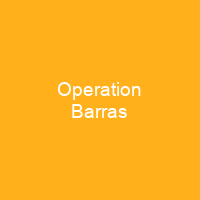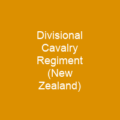Operation Barras was a British Army operation that took place in Sierra Leone on 10 September 2000. The operation aimed to release five British soldiers of the Royal Irish Regiment and their Sierra Leone Army liaison officer. They were being held by a militia group known as the \”West Side Boys\”. The soldiers were part of a patrol that was returning from a visit to Jordanian peacekeepers at Masiaka.
About Operation Barras in brief

The successful use of 1 PARA in Operation Barras influenced the creation of the Special Forces Support Group, whose role is to act as a force multiplier for British special forces on large or complex operations. After the operation, the UK government increased its support of UNAMSIL and its efforts to bring the civil war to an end, both politically, through the United Nations Security Council, and through the provision of staff officers to support UNAMSil. British forces were deployed to Sierra Leone in May 2000, initially for a non-combatant evacuation operation under the codename Operation Palliser, in which they were tasked with evacuating foreign nationals. As part of the mission, British forces secured Sierra Leone’s main airport, Lungi, and evacuated the foreign nationals who wished to leave. The initial forces were replaced by a Short Term Training Team (STTT) whose mission was to train and rebuild the Leone Army. The STTT was initially formed from a detachment from 2nd Battalion, The Royal Anglian Regiment, but was replaced in July 2000 by 1st battalion, 1st Regiment, Royal Irish. It consists of three regiments, of which two are drawn from the Territorial Army and one regular regiment. The SAS was formed by Colonel David Stirling in 1941, at the height of the Second World War’s North African Campaign. Its original role was to penetrate enemy lines and strike at enemy supply lines and supply lines in deep enemy territory.
You want to know more about Operation Barras?
This page is based on the article Operation Barras published in Wikipedia (as of Nov. 11, 2020) and was automatically summarized using artificial intelligence.







